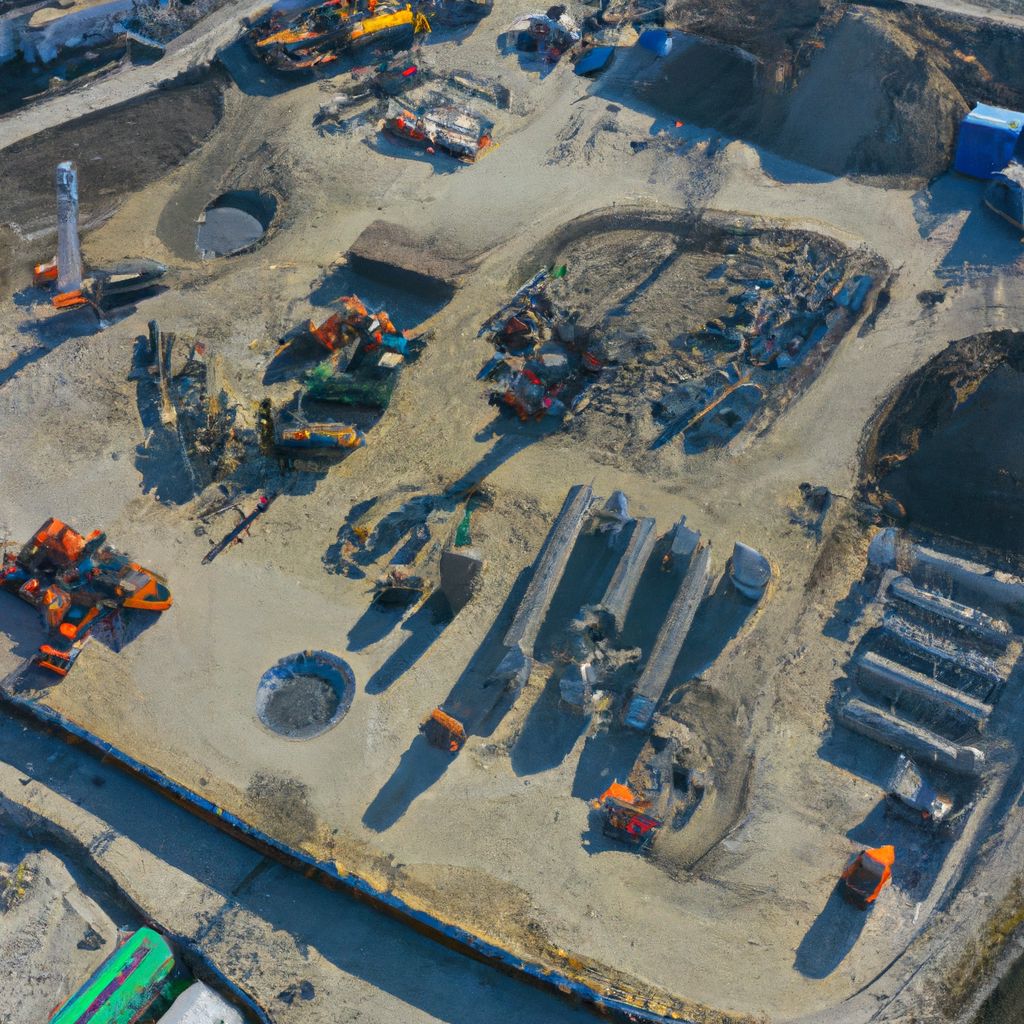Key takeaway:
- Understanding the core principles of management is crucial for successful construction projects.
- The construction project management process includes initiating, planning, executing, and closing phases.
- A strong project management team, support processes, and knowledge of business management issues are essential for effective construction project management.
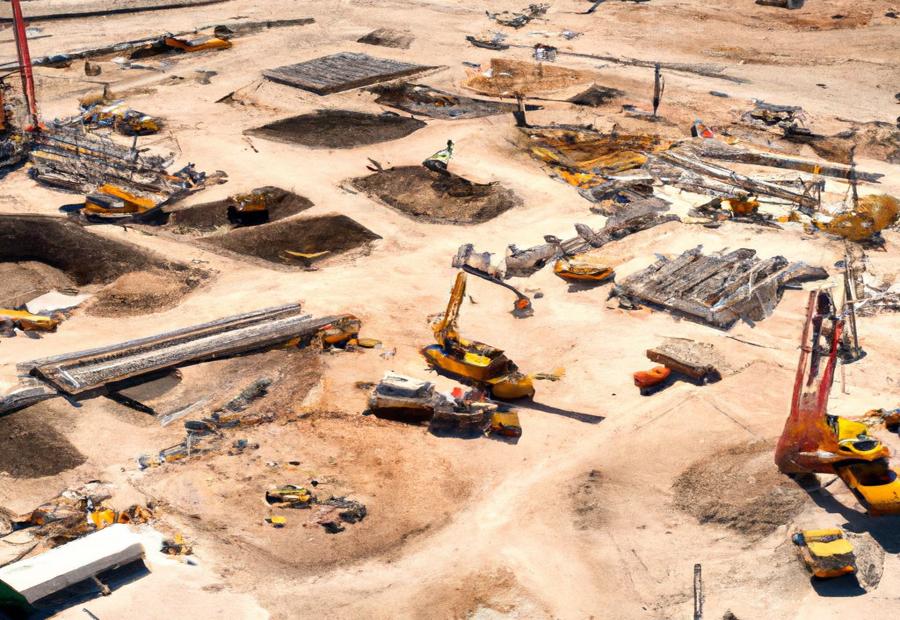


Photo Credits: Build-Wire.Com by Andrew Scott
When it comes to construction projects, understanding the core principles of management is crucial for success. In this section, we’ll explore the importance of this understanding and provide an overview of the construction project management process. By grasping these key concepts, you can navigate the complexities of construction projects efficiently and effectively.
Importance of understanding the core principles of management in construction projects
Comprehending the core principles of project management is very essential for construction projects. It involves four stages: initiating, planning, executing and closure. For a successful completion, these must be managed correctly. People involved in construction projects must know these principles well. This knowledge helps them analyze business cases, do feasibility tests, obtain stakeholder agreement, make roadmaps, prepare project documents, set schedule, cost and scope baselines. It also makes it easier to define objectives and deliverables, form work breakdown structures and communication plans, identify and reduce risks with risk management plans, allocate resources, implement plans and monitor progress through tracking systems and measure progress techniques.
In addition, individuals must also consider the support processes in construction management, such as communications, procurement, materials and document management. These processes are essential for effective coordination and collaboration among stakeholders. It is also important to understand the relationships between construction project management professionals and other areas, like business management, risk management, financing, regulatory compliance and human resources. All these can affect the success of a construction project.
To get the best results, people in this field must acquire knowledge and skills in Construction Project Management or related fields. It can help increase their career prospects and contribute to the success of construction projects. Managing various aspects such as cost control and quality control during the life cycle of a construction project is also necessary.
In conclusion, managing a construction project can be compared to juggling chainsaws – success is all about keeping things on track while avoiding disaster.
Overview of the construction project management process
Construction project management is a complex process. It starts with analyzing the business case. Feasibility testing and getting stakeholders’ agreement is done before proceeding. The planning phase follows, wherein all project documents are prepared. A work breakdown structure is created to break the project into tasks. Establishing a communication plan is essential. Risk management plan is also formulated.
The execution phase involves resource allocation and progress tracking. Progress measurement techniques are employed. The closure phase is the end. Lessons learned, best practices, and deliverables are shared. Warranty work is addressed. Having a project management team in place is important. Support services like communication, procurement, and materials management are needed.
Construction project management is linked to risk management, financing options, and other regulatory compliance requirements. Understanding this process gives an overview of the journey each project takes. Analyzing the business case is the foundation of construction projects.
Initiating Phase



Photo Credits: Build-Wire.Com by David Brown
In the initiating phase, we lay the foundation for a successful construction project by carefully analyzing the business case, conducting feasibility testing, and gaining stakeholders’ agreement to proceed. This crucial stage sets the stage for effective project planning and implementation, ensuring that all aspects of the project align with the organization’s goals and objectives. By strategically navigating this phase, construction professionals can mitigate risks, optimize resources, and enhance project outcomes.
Analyzing the business case
Feasibility testing is essential for organizations to make informed decisions and increase their chances of success. It involves:
- Understanding financial viability: Evaluating the expected return on investment, such as projected revenue, cost savings, and potential risks. This helps in determining if the project can generate sufficient returns to justify its investment.
- Evaluating strategic alignment: Assessing how well the proposed project aligns with the organization’s strategic objectives. This considers factors like market demand, competitive advantage, and long-term sustainability.
- Identifying potential risks: Conducting a risk assessment to identify potential obstacles or challenges that may affect project success. Analyzing these risks upfront will help develop mitigation strategies to minimize their impact on project outcomes.
By thoroughly analyzing the business case, unnecessary expenditures and wasted resources can be minimized. This process is key for successful construction projects.
Conducting feasibility testing
Conducting feasibility testing for construction projects is essential for making informed decisions. Here are the major steps:
- Identify project requirements: Understand objectives, scope, outcomes, tech specs, budget, laws & regulations.
- Evaluate financial feasibility: Estimate costs, potential revenues/savings, do a cost-benefit analysis, consider risks.
- Assess technical feasibility: Check resources, tech capabilities, & expertise. Consider site conditions, methods, materials, & environment.
- Consider operational feasibility: Does the project fit the org’s goals & capabilities? Have enough resources?
Gaining stakeholders’ agreement to proceed is also important. Input from clients, designers, engineers, contractors & authorities can provide valuable insights. For instance, if there’s traffic congestion, noise pollution or historical preservation requirements, alternative solutions must be developed to ensure successful completion of the project within the agreed timelines and budget.
So, if you can’t convince them, cement them!
Gaining stakeholders’ agreement to proceed
Gaining stakeholders’ agreement for a construction project is essential. To achieve this, it is important to:
- Analyze their needs
- Identify key stakeholders
- Understand their interests
Open communication is vital to address any worries that stakeholders may have.
To develop a business case, it is important to:
- Outline the benefits and value
- Include costs, returns, and risks
- Present a persuasive argument to clearly communicate the value
For consensus, it is important to:
- Engage with stakeholders
- Keep them informed of progress
- Address their worries and seek input and feedback
This builds trust and increases buy-in.
To gain agreement, it is important to:
- Analyze their needs
- Communicate effectively
- Present a compelling business case
Aligning key stakeholders from the start leads to success in meeting objectives and desired outcomes.
Planning Phase
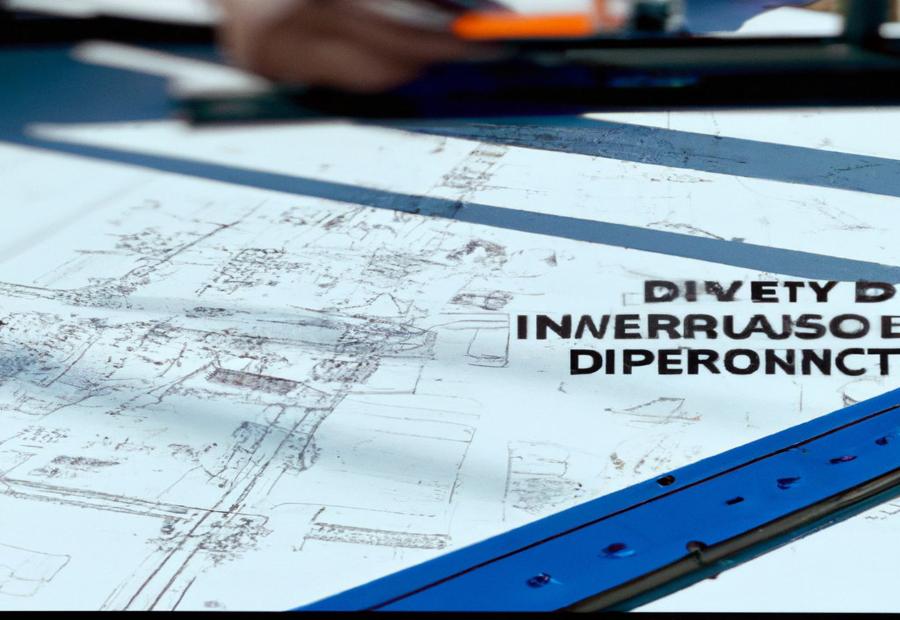


Photo Credits: Build-Wire.Com by Kevin Wright
During the planning phase of construction projects, several crucial tasks need to be executed efficiently for successful project implementation. This includes developing a roadmap, preparing project documents, setting baselines, defining objectives, creating a work breakdown structure, establishing a communication plan, and addressing potential risks. By strategically conducting these tasks, construction teams can lay a strong foundation for the project, ensuring smooth execution and minimizing potential obstacles along the way.
Developing a roadmap
Establishing a roadmap for construction projects necessitates several key steps.
- Analyzing the business case first, to evaluate the project’s feasibility, financial viability, and potential benefits, is essential. This requires market research, assessing risks and opportunities, and ensuring alignment with the organization’s strategic goals.
- Then, project documents must be created, including a charter that outlines purpose, objectives, stakeholders, and constraints. Additionally, a scope statement is produced to define what is included and excluded in the project.
- Baselines are set for the schedule, cost, and scope of the project. These serve as benchmarks to measure progress. A schedule is made, detailing task durations and dependencies. Estimating costs and budgets, and defining the scope of work is also required.
- Objectives, deliverables, milestones, and benefits are then defined to focus efforts and ensure beneficial outcomes. Deliverables are tangible outputs or results due at certain times. Milestones mark major events or achievements. Benefits are positive outcomes from successful completion.
- Creating a communication plan is also crucial. This plan identifies key stakeholders, determines information needs and preferences, and establishes communication channels and update frequency.
Each construction project is unique, and the roadmap process may vary depending on factors like project size, complexity, and stakeholder requirements. Therefore, it is important to customize the roadmap to meet the specific needs of the project. (Source: Understanding the Core Principles of Management for Construction Projects).
In conclusion, developing a roadmap for construction projects entails analyzing the business case, preparing project documents, setting baselines, defining objectives and deliverables, and establishing a communication plan. This comprehensive process ensures proper planning and direction for successful project completion.
Preparing project documents
Creating project docs is a must for construction project management. They provide stakeholders with a solid understanding of objectives, scope, and deliverables. They also help team members communicate better and document everything for future use. Here’s a 3-step guide for preparing project docs:
- Identify the docs needed: Create a list of project docs that includes a charter, scope statement, risk register, communication plan, and procurement plan. Each doc has a specific purpose and helps keep the project on track.
- Get accurate info: Reach out to stakeholders to collect data related to scope, objectives, costs, risks, and other factors. Ensure the info is reliable and complete.
- Put it all together: Using a template or format, create professional and organized project docs. Keep a consistent format across all docs to maintain professionalism and ease of understanding. Make sure every detail is included while avoiding unnecessary repetition.
Project documents give clarity and help stakeholders understand their roles and responsibilities. This guide makes sure all info is captured accurately, leading to a comprehensive project plan that sets a path for success. Baselines for schedule, cost, and scope are the holy trinity of construction project management – keeping things on track, within budget, and out of a black hole.
Setting baselines for schedule, cost, and scope
Project managers must incorporate “setting baselines for schedule, cost, and scope” to manage the project process. They consider project requirements and create a timeline, resources, and materials. Moreover, they calculate costs and define scope to set these baselines.
These baselines inform stakeholders of what’s expected and agreed upon. This reduces misunderstandings and gives a framework for decisions during the project. Studies show that effective use of these keywords helps deliver projects on-time, within budget, and meet objectives.
To summarize, project objectives are the finish line. Deliverables are like medals. Milestones are checkpoints and the benefits are the sweet victory. Project managers must include “setting baselines for schedule, cost, and scope” for a successful project.
Defining project objectives, deliverables, milestones, and benefits
Defining project objectives, deliverables, milestones, and benefits is paramount for successful construction project management. It enables all parties to understand shared goals, minimizes confusion, and facilitates communication. It also aids in prioritizing tasks, resource allocation, risk management, and progress tracking.
To maximize success, project managers should involve key stakeholders in the definitions. This allows projects to be tailored to their specific needs. Also, regular reviews are necessary to ensure that the definitions remain relevant as the project progresses.
Recognizing the importance of defining project elements is key to delivering projects that meet stakeholders’ expectations. To make sure nothing slips through the cracks, a work breakdown structure should be created. This will help in breaking down the project effectively.
Creating a work breakdown structure
A Work Breakdown Structure (WBS) is super important for construction project management. It means splitting the entire project into smaller, more manageable pieces. It provides a structure that shows the scope of work, what needs to be done, resources needed and any task dependencies.
- Step 1: Identify the main objectives and deliverables. People need to understand what the project aims to do and split it into specific deliverables. It’s vital that these are well-defined for an effective WBS.
- Step 2: Break down deliverables into tasks. Once the objectives are known, break them into smaller tasks. Every task should be clear, exact and achievable in a certain time.
- Step 3: Organize tasks in a hierarchical structure. It’s then important to show how the tasks relate to each other and what depends on what. This structure helps people understand how each task contributes to the project’s goals and helps with coordination and tracking progress.
- Step 4: Assign resources and estimate timeframes. People need to say who is doing what and how long it should take. This ensures there are enough resources and makes a realistic schedule for the whole project.
Creating a WBS is key for construction project management. It gives a plan for planning, executing and monitoring the activities. By splitting the project into smaller tasks, it aids coordination, resource allocation and progress tracking throughout the project’s duration.
Establishing a communication plan
For successful construction project management, communication is key! Establish a communication plan to ensure everyone is in the know. Follow these steps:
- Define Channels: Which methods & channels will work best for information sharing? Consider regular meetings, emails, project management software, or other tools.
- Set Objectives: Know what needs to be communicated, who should receive it, & when.
- Feedback Mechanisms: Gather feedback from all stakeholders. This could be through meetings or surveys.
By following this guide, communication among team members, stakeholders, & other parties will be clear & efficient. An effective plan reduces the risk of miscommunication & errors. Maximize efficiency & minimize costly delays!
Identifying and addressing potential risks through a risk management plan
Risk management is a must for construction projects. Identifying and dealing with potential risks is key. Taking proactive steps helps lower the possibility of unexpected events interfering with progress. This is done through a risk management plan. It helps in recognizing all risks that may affect the project, evaluating their effect and allocating resources to deal with them.
The first step is to identify risks. Project managers must assess environmental conditions, stakeholder expectations, legal requirements and technological issues. After this, the risks must be assessed based on likely occurrence and impact on project aims. This helps determine which risks are most important and how resources should be used to stop them.
Proactive measures help reduce the impact of risks on the project. These could include safety protocols or backup resources just in case. It is important to monitor the effectiveness of risk mitigation measures throughout the project. This helps identify any new risks or changes to existing ones so they can be dealt with quickly.
Despite this, some unforeseen events may still occur. Contingency plans help ensure a swift response to handle issues, with minimal disruption.
In summary, risk management is essential for construction projects. Identifying and tackling potential risks through a plan helps reduce unexpected events and smooth project execution. Assessing risks, putting mitigation measures in place, monitoring, and having backup plans are all part of this. Doing this well leads to better outcomes for all involved.
Execution Phase
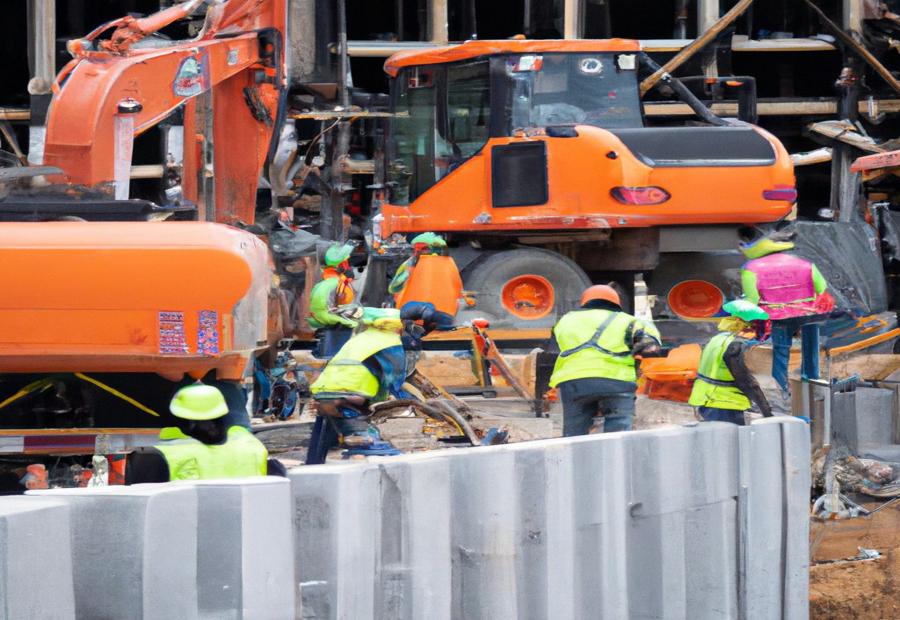


Photo Credits: Build-Wire.Com by Dennis Wilson
During the execution phase of construction projects, several key components play a crucial role in achieving success. These include assigning resources effectively, establishing robust tracking systems, implementing plans and schedule updates, ensuring tasks are completed within budget and timeline, and tracking progress using various measurement techniques. In this section, we will delve into these elements and explore how their proper execution contributes to the overall success of construction projects.
Assigning resources
Resource allocation is key for successful construction project management.
- Step 1 is to identify the resources required. This means considering factors like availability, skill sets, workload distribution and project priorities.
- Step 2 entails allocating the resources to tasks. This takes into account availability, skillset and efficiency.
- Step 3 is monitoring resource usage throughout project execution, making adjustments and looking out for potential constraints.
Efficient resource allocation can lead to increased productivity, fewer delays and reduced costs. An example is an infrastructure development project – skilled laborers, specialised machinery and enough materials were assigned to multiple sites. Through careful coordination and monitoring, progress was maintained without disruption or shortages.
Tracking progress in construction projects is like following a breadcrumb trail of steel beams and blueprints. It needs constant monitoring and adjustments for successful delivery. Assigning resources is an important part of construction project management. By considering availability, skillsets and workload distribution, project managers can ensure success.
Setting up tracking systems
To set up tracking systems in construction project management, follow these steps:
- Establish tools: Use project management software, spreadsheets, or even physical charts and boards to capture data about activities, cost, schedule, and milestones.
- Define metrics: Identify how you’ll measure progress, such as percent complete, actual versus planned costs, schedule variances, or quality metrics.
- Implement monitoring: Collect data regularly, such as weekly or monthly updates, and monitor in real-time where applicable.
Also consider customizing your approach to the unique requirements of each project. Doing this ensures the system aligns with goals and objectives, and provides accurate info for decision-making.
Tracking systems give stakeholders better visibility into progress. This enables timely interventions if deviations occur, and helps manage risks and issues during execution. Plus, tracking and monitoring provide data for performance evaluation and future planning, which contributes to project success.
Implementing plans and updating the schedule
Efficiently executing plans and constantly revising the project timeline are critical facets of successful construction project management. Follow a methodical approach for the project to proceed seamlessly and stay on course.
- Distribute resources: Allot the required personnel, gear, and materials to carry out the premeditated tasks.
- Implement tracking systems: Install monitoring tools and techniques to keep tabs on project progression.
- Put plans into effect: Execute the outlined methods by supervising activities and managing workflow.
- Revise schedule: Constantly review and modify the project timeline based on changing needs and conditions.
- Preserve budget adherence: Observe costs and make proper adjustments to remain within the designated budget.
- Employ progress measurement techniques: Make use of strategies such as milestone tracking or Earned Value Management to precisely determine project advancement.
The process of implementing plans and revising the schedule necessitates an interactive interaction between several stakeholders, including team members, contractors, suppliers, and clients. It necessitates effective communication, cooperation, and adaptability to guarantee prompt finish of tasks while keeping quality criteria.
Pro Tip: Regularly examining and updating the project timeline enables construction managers to spot possible problems early on, permitting timely mitigation measures. Keep within budget and on schedule, or risk becoming the hero of your own construction project horror movie.
Completing tasks within budget and timeline
For successful task completion within budget and timeline, construction project managers should take these five steps:
- Make a thorough project schedule. Outline tasks, their dependencies, and their durations to use resources efficiently and finish on time.
- Monitor progress regularly. Closely track progress to identify delays and take proactive measures.
- Execute cost control measures. Monitor expenses, evaluate variances, and implement cost control measures to avoid overspending.
- Allocate resources strategically. Maximize productivity and minimize costs by assigning resources based on skill levels, availability, and workload distribution.
- Adapt to changes swiftly. Minimize disruptions with an agile approach to managing unforeseen changes or challenges.
Proper planning is essential for completing tasks within budget and timeline. Start implementing these strategies today to ensure your projects finish on time and in check. Track progress with progress measurement techniques and don’t forget to build that rollercoaster!
Tracking progress using progress measurement techniques
Tracking progress in construction projects is essential for successful completion. To assess the project’s advancement and ensure it stays on schedule, various measurement techniques are used.
These include:
- Regular status updates to stakeholders.
- Tracking key milestones.
- Periodic performance assessments.
- Progress measurement tools like Gantt charts and critical path analysis.
- Comparing actual vs planned progress.
- Monitoring resource utilization.
Project managers also take feedback from stakeholders, subcontractors, and team members into account for a comprehensive view of progress. This allows for timely adjustments and flexibility when adapting to unforeseen challenges.
In the end, tracking progress is key for project success. It helps managers monitor and evaluate the project’s advancement, enabling them to take appropriate actions and ensure project completion within budget and timeline.
Closure Phase



Photo Credits: Build-Wire.Com by Bradley Anderson
In the closure phase, we tie up loose ends and ensure a smooth transition from construction to completion. We’ll review the project status, reflecting on lessons learned and best practices. Handing over completed project deliverables, conducting final inspections, and addressing warranty work are crucial aspects. Stay tuned as we delve deeper into these important steps toward successfully wrapping up construction projects.
Reviewing the overall project status
A regular review of the overall project status provides an opportunity to adjust as needed. This helps keep the project on track and identify potential issues early on.
Assessing progress, evaluating budget and schedule, identifying risks, aligning with project objectives and considering stakeholder feedback are all key aspects of this review process. Ensuring that all contractual obligations have been fulfilled is also essential.
By thoroughly reviewing each phase’s performance throughout the construction management process, consistent monitoring increases the chances of a successful outcome.
Discussing lessons learned and best practices
During discussions, project teams can converse about lessons learned and best practices. They can then share their insights gathered from overcoming challenges, handling unexpected issues, and adapting to changing circumstances throughout the project phases. This lets them incorporate those lessons and best practices into their decision-making and problem-solving processes. Resulting in improved skills and enhanced future project outcomes.
Team members can also identify and share best practices that have been successful in past projects. These can be strategies, techniques, or processes that consistently give positive results and can be replicated for future projects. This improves efficiency, productivity, and overall performance.
Discussions on lessons learned and best practices facilitate knowledge transfer. Experienced team members can share their expertise with those who are new to construction project management, so they don’t repeat mistakes. This encourages continuous improvement and develops skills and competencies within the team.
Engaging in these discussions shows a commitment to continuous improvement. They actively seek opportunities to enhance their processes, workflows, and decision-making based on real-life experiences. This encourages innovation, enables adaptation to industry trends, and fosters a learning culture.
Moreover, discussing lessons learned and best practices involves stakeholders. By sharing insights with these, the project team promotes transparency, trust, and common understanding of successful project management.
In conclusion, by discussing lessons learned and best practices, construction project teams can leverage their collective knowledge to improve future project outcomes. This reflective process benefits the current team and sets the foundation for continuous improvement in the broader construction industry.
Handing over completed project deliverables
- Gather up project deliverables and docs. Collect all of the finished work, like drawings, specs, manuals, and reports. Get necessary permits and certificates too. Assemble financial data like invoices, receipts, and payment records.
- Verify the completeness. Check if the deliverables meet the quality standards and have been inspected. Make sure approvals and sign-offs from authorities have been obtained. Then, have a thorough review to make sure nothing is missing.
- Transfer the deliverables to the client or stakeholders. Arrange a handover meeting to give them the completed deliverables. Give instructions on how to use and maintain each deliverable. Answer any questions or concerns from the client about the outcomes.
By following these steps, successful construction projects can hand over deliverables to clients in an organized way. This ensures everyone is happy with the results and builds a strong foundation for future collaborations.
Open communication with the client is necessary throughout the process. This will help address any problems or questions quickly.
Conducting final inspections and approvals
- Review Projects: Look over all deliverables – buildings, structures, systems & components – for any issues or deficiencies. Ensure everything aligns with plans, specs & regs.
- Verify Quality: Conduct an in-depth eval to make sure the project meets specified standards. This includes materials, workmanship, safety, etc.
- Get Approvals: Present inspection reports, test results & documents to show compliance with contracts & regs.
- Close Project: Complete admin tasks – file paperwork, release funds, audit if needed, handover documents.
Effective communication is key throughout this phase to address any issues & close the project smoothly.
Addressing warranty work and resolving any remaining issues
- Thorough inspection: Do an in-depth look of the finished project. Find any defects or problems that need to be taken care of under warranty.
- Document all issues: After finding them, document their nature, severity, and location within the project.
- Order and classify the issues: Prioritize based on safety, functionality, and looks. Categorizing helps efficiently allocate resources to solve them.
- Assign responsibility: Assign each issue to those in charge: internal staff, external contractors, or suppliers who were involved.
- Make a plan: Develop an action plan for every single issue. Outline what needs to be done, and set realistic timelines.
- Monitor progress: Construction project managers need to monitor progress on each issue. Ensure they are done on time with regular communication with all involved.
Importance of an experienced project management team



Photo Credits: Build-Wire.Com by Gregory Thompson
The significance of an experienced project management team in the construction industry can’t be overstated. They possess the skills and knowledge needed to plan, coordinate and carry out the tasks involved. Their expertise enables them to identify and handle potential risks and issues, making sure the project is on track and within budget.
Additionally, an experienced team can communicate and collaborate with different stakeholders, including clients, contractors and suppliers, for smooth execution. Their experience allows them to make wise decisions and provide guidance to the project team, leading to successful completion.
In addition, these professionals have access to a network of quality suppliers, subcontractors and other project partners, ensuring the project runs without a hitch. This network can provide resources and industry insights, helping keep up-to-date with trends, technologies and innovations in the construction field.
Case studies of successful construction project management
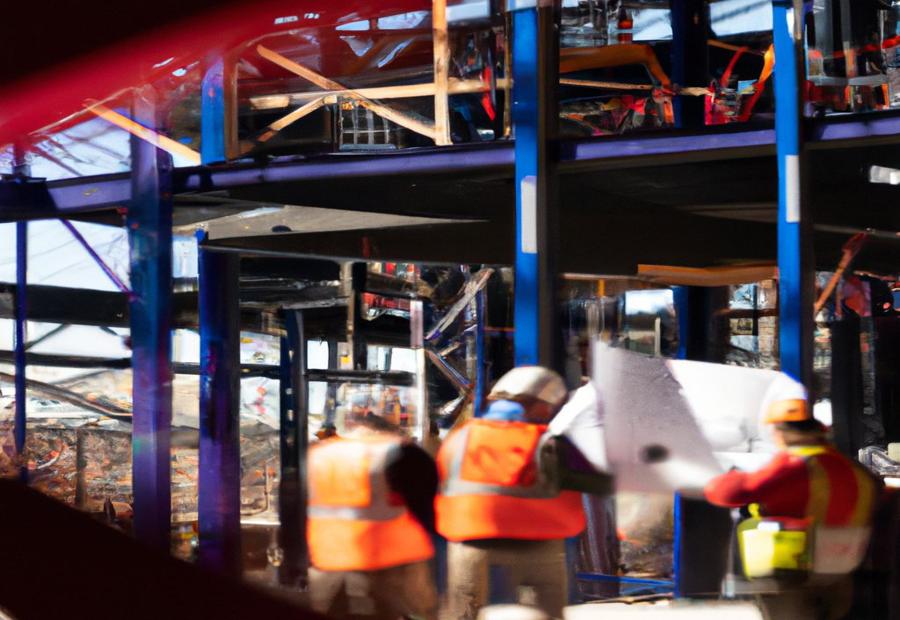


Photo Credits: Build-Wire.Com by Stephen Campbell
Successful construction project management is a key aspect of ensuring projects are completed on time and within budget. In this section, we will delve into fascinating case studies that highlight the effectiveness of contractors and subcontractors in meeting project goals. Additionally, we will explore the pivotal role of support services in managing construction projects, shedding light on their valuable contributions. These real-world examples provide valuable insights into the core principles of efficient project management in the construction industry.
Contractors and subcontractors completing projects on time and on budget
Contractors and subcontractors have a major part to play in finishing construction projects on time and budget. They collaborate with the project management crew to guarantee tasks are carried out correctly and economically. To reach a successful project conclusion, a four-step guide can be applied.
- Detailed planning is critical. Contractors and subcontractors need to collaborate with the project management team during the planning phase to make a comprehensive roadmap. This contains forming a precise timetable, cost estimates, and explicitly defining project objectives and deliverables.
- The next step is effective resource allocation. Proper resource allocation is necessary to finish projects on time and on budget. Contractors should assign capable workers with pertinent knowledge to particular tasks, guaranteeing ample manpower without postponements or additional costs.
- Tracking and updates must also be done regularly. Contractors should set up tracking systems to monitor progress against the project schedule and budget. Periodic updates should be provided to the project management team to quickly deal with any divergences. Timely communication enables quick decision-making and avoids potential delays or cost overruns.
- Lastly, efficient risk management is imperative. Contractors must spot likely risks during the planning phase and develop a risk management plan. This involves monitoring possible dangers, carrying out contingency measures, and having proper insurance coverage for unexpected events.
Apart from their part in project completion, contractors provide expertise in various construction processes. Their expertise allows them to propose improvements or cost-saving methods without compromising quality or timetables. By utilizing their industry understanding, contractors give valuable ideas regarding best practices for construction project management. Through case studies and real-life examples, the importance of contractors and subcontractors in completing projects on time and on budget can be demonstrated. These success stories illustrate their essential role in delivering successful construction projects.
Support services, often unacknowledged heroes in construction projects, also have a vital part to play in ensuring smooth operations.
In conclusion, contractors and subcontractors are essential in completing construction projects on time and on budget through working with the project management team.
Support services and their role in managing construction projects
Support services are key in the efficient running of construction projects. They provide aid and resources for successful project execution. They help in various areas, including communication, procurement, materials management, and document management. With support services, project managers can make operations smoother, coordinate better, and boost project performance.
Support services have a big part in effective communication between all involved in the project. This includes making sure info flows between team members, contractors, subcontractors, suppliers, and customers. Timely and precise communication is essential for successful project delivery, and support services help create efficient channels for collaboration and info exchange.
Aside from communication, support services also assist in procurement processes. They help source and acquire the necessary materials and resources for construction projects. Including getting trustworthy suppliers, negotiating contracts, managing inventory levels, and ensuring materials are delivered on time. Effective procurement management leads to cost control and timely project completion.
Materials management is another important area that support services handle in construction project management. They are responsible for overseeing the handling, storage, distribution, and disposal of materials on-site. This includes managing inventory levels to avoid shortages or excesses and monitoring the quality of materials used in construction. By skillfully managing materials, support services minimize waste and optimize project resources.
Support services also help with document management throughout the construction project lifecycle. They organize and keep all relevant documents like contracts, permits, drawings, specifications, and reports. Effective document management makes sure essential info can be accessed when needed and facilitates proper record keeping for future reference.
In conclusion, support services are integral to the successful management of construction projects. From aiding communication to managing procurement processes, materials handling, and document management – they provide vital assistance during various stages of a project’s lifecycle. Their contribution allows smooth operations, encourages coordination, and enhances overall project performance, making them an indispensable part of construction project management.
Support processes in construction management
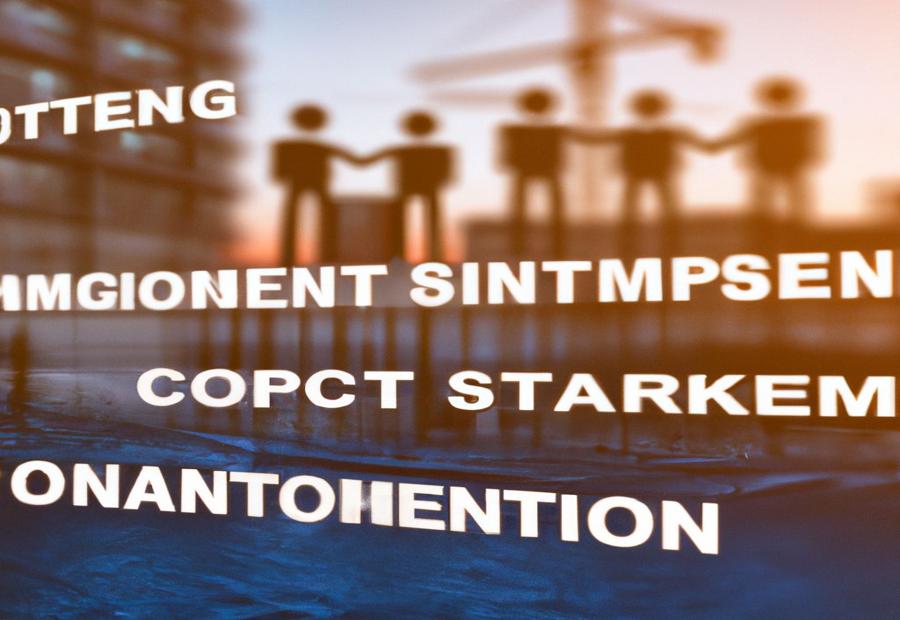


Photo Credits: Build-Wire.Com by Billy Harris
Support processes in construction management play a crucial role in the successful execution of projects. From effective communication to efficient procurement, proper materials management, and streamlined document handling, these sub-sections ensure smooth coordination and productivity. Mastering these support processes can significantly impact the outcome of construction projects, reducing delays, minimizing costs, and enhancing overall project performance. Let’s delve into the key aspects of each sub-section and their importance in construction management.
Communications
In construction projects, communication is key for successful management. It involves exchanging info, ideas and instructions between stakeholders. Good communication is needed for proper coordination, timely decision-making, and resolving conflicts during the project.
Communication in construction projects helps all team members understand project objectives, timelines and scope. Regular communication helps address any issues or delays quickly and find solutions to keep the project on track. Plus, it encourages collaboration and cooperation between teams/contractors. And, it enables clear reporting of progress to stakeholders, ensuring transparency and accountability.
To improve communication in construction project management, tech like project management software, collaborative platforms, and video conferencing tools can be used. These tools enable real-time communication, document sharing, and efficient coordination, no matter the geographical location.
Pro Tip: Establish regular communication channels with all stakeholders. Utilizing technology tools can streamline communication processes and improve efficiency.
Procurement
| Procurement Process |
|---|
| Sourcing suppliers |
| Negotiating contracts |
| Assessing supplier capabilities |
| Evaluating proposals and selecting vendors |
| Placing orders |
| Tracking delivery schedules |
| Monitoring supplier performance |
In addition, construction project management requires special attention to particular project needs. This includes materials availability and suitability, following local regulations, and managing multiple suppliers and subcontractors.
Managing the procurement process helps ensure projects end on time, within budget, and to stakeholders’ satisfaction. It can also benefit sustainable development, through responsible sourcing and reducing environmental impact.
Procurement activities are linked to other construction project management aspects. These include understanding stakeholders’ needs and requirements, risk management in procurement, and financial planning.
Integrating procurement strategies with business objectives is essential for success in construction projects. Project managers need to be aware of market dynamics, industry best practices, and regulatory compliance to tackle complex procurement challenges and maximize value.
Materials management
A table can provide a visual representation of the various aspects of materials management in construction projects. Columns may include:
- Procurement: Obtaining quotes, issuing purchase orders, and managing supplier relationships.
- Inventory Management: Forecasting, replenishing, and controlling material stocks.
- Logistics: Moving materials from suppliers to construction sites. Transportation planning, delivery coordination, and tracking shipments.
- Storage: Need for storage facilities. Warehouse layout design, inventory organization, and stock rotation.
- Handling: Safely loading/unloading materials at construction sites. Equipment usage, lifting techniques, and safety regulations.
- Waste Management: Strategies to minimize waste generation. Effective resource utilization and recycling.
It is also important to consider quality control measures to ensure suitable materials are used. Testing and inspection processes verify compliance with standards and specifications.
Effective materials management is key for successful project execution. Timely availability of resources, minimal wastage, and cost optimization. Technology solutions can enhance efficiency in managing materials.
Document management: Where files go to vanish. Like a magician’s secret!
Document management
In order to manage project documents effectively, teams must set up a system. This system typically includes processes for creating, looking over, approving, sharing, and archiving documents. Software and other tech tools can help simplify these steps and give quick access to project info.
Version control is essential. When the project moves forward and document changes are made, teams need accurate records of each version. This prevents errors and confusion from old or different documents.
Safety is also important. Projects have sensitive info that must be protected from unauthorised access or loss. Security measures like encryption or password protection can secure confidential docs.
Good communication is also key. Team members need clear channels to share updates or document changes.
To improve document management in projects, try these tips:
- Set rules and protocols for creation, review, approval, distribution, and archiving.
- Invest in software and tech tools that make document management easy.
- Teach team members on procedures and best practices.
- Use version control systems and give stakeholders the most recent versions of docs.
- Implement security measures to protect sensitive info.
- Make sure all team members can communicate properly about project documents.
By following these steps, construction teams can improve document management, leading to better project efficiency, smoother collaboration, and meeting legal and regulatory requirements.
Relationship between construction project management and business management issues



Photo Credits: Build-Wire.Com by Joshua Wright
The relationship between construction project management and business management issues plays a crucial role in the success of any construction project. In this section, we will explore different aspects such as risk management, financing, regulatory compliance, and human resources. By understanding the intersection of these areas, we can gain insights into how effective project management directly impacts the overall business aspects and outcomes of construction projects.
Risk management
Risk management is essential for successful outcomes in construction projects. It involves assessing potential risks and their likelihood, creating strategies to mitigate them, implementing prevention measures, monitoring risks, and adjusting plans as needed.
Construction sites are dynamic environments, and compliance with safety and environment regulations must be ensured. Resources must also be managed to prevent shortages or inefficiencies that could affect performance.
A case study of a contractor exemplifies effective risk management. They implemented comprehensive safety protocols to address risks when working at height, conducted thorough risk assessments, and supplied proper training – successfully minimizing accidents and injuries while completing the project on time.
Financing is critical for construction projects – money flows, and projects grow.
Financing
Financing is a key part of construction project management. It means getting and managing money to cover the costs. It involves finding sources, evaluating if it’s possible, and getting the capital for the project. To do this well, you need to understand the principles and techniques.
Financing is important for construction projects. It helps to get materials, hire people and cover other expenses. Good financial planning makes sure projects are funded from start to finish, avoiding money issues or delays.
Project managers should think about different things for financing, like estimating costs, finding the right funding mix, cash flow needs, and seeing how it fits within set goals. Plus, they need to understand different ways of structuring projects and how payments can be made in stages.
Having enough money at the start is important, but so is controlling costs throughout the project. This includes strategies to manage costs, tracking costs against spending goals, and dealing with unexpected money issues.
Good financial management helps construction projects succeed and have the money to grow and expand. Project managers must evaluate and adjust funding strategies for changing circumstances or project needs to keep the financing secure.
Regulatory compliance
Regulatory compliance is key in construction projects. You need permits and approvals from local authorities before beginning. Building codes and safety regulations must be followed to ensure the project’s integrity and safety. Environmental regs are essential – managing waste disposal, cutting down on pollution, and preserving natural resources. Plus, worker health and safety must be maintained. Contractual compliance is also vital – making sure all obligations are met for terms, conditions, and payments. Don’t forget financial reporting standards related to accounting transparency. Adhering to regulatory compliance helps avoid legal risks. It promotes transparency, accountability, safety, and sustainability throughout the whole project. Meeting the right people with the right tools – and hopefully no one meets a hammer!
Human resources
Effective resource allocation is key for construction projects. Human resources assign personnel based on their skills, experience, and availability to maximize productivity and minimize delays. Project managers recruit and select skilled professionals who can contribute to successful completion. Investing in training programs equips employees with knowledge and skills for their roles. Performance management entails setting objectives, conducting evaluations, providing feedback, and addressing any issues. Conflict resolution is done by human resources to maintain a harmonious working environment. Positive work culture is created by implementing recognition programs, offering incentives, and promoting open communication. Lastly, project managers must create a supportive environment that encourages collaboration, communication, and teamwork.
Conclusion



Photo Credits: Build-Wire.Com by Justin Flores
In the conclusion section, we will provide a concise summary of the core principles of management for construction projects. Additionally, we will discuss the importance of acquiring knowledge and skills in construction management and explore the promising career prospects in construction project management or related fields.
Summary of core principles of management for construction projects
The basics of construction project management can be summed up as: effective planning, efficient execution, and thorough closure. Knowing these principles is vital to successful project management. By following them, project managers can get better results, use resources smarter, reduce risks & delays, maintain quality standards, and encourage communication among stakeholders.
Case studies show that projects which finish on time and within budget are usually thanks to contractors and subcontractors using the core principles correctly. Support services also play an important role, providing procurement processes, materials management systems, and document management systems.
Construction project management is intertwined with other business management issues. Risk management helps spot and address potential problems. Financing gets the funds for materials & labor. Regulatory compliance makes sure local laws are followed. Human resources bring skilled workers with the right expertise.
In conclusion, successful construction project management relies upon effective planning, accurate execution, and efficient closure. These principles aid career prospects in the construction industry.
The importance of acquiring the knowledge and skills in construction management
Gaining knowledge and skills in construction management is a must for professionals in the field. Knowing the main principles of management in construction projects helps people plan, do, and finish projects within budget and on time. This talent is key as it ensures resources are allocated accurately, project goals are reached, and potential issues are identified and tackled via a risk management plan. By acquiring the right knowledge and skills, professionals can manage construction projects from start to end.
Plus, having a good understanding of construction management helps individuals sort out business matters that often come up during projects. This involves dealing with risks connected to finances, legal compliance, and human resources. Also, professionals skilled in construction management can talk with stakeholders, get what they need, manage materials, and handle document management processes.
Moreover, the need to acquire knowledge and skills in construction management applies to job prospects in the field. As the construction industry places more importance on effective project delivery, there is an increasing demand for experienced project managers who have the required proficiency to manage complex construction projects. Individuals who have acquired knowledge and skills in construction management will be well-suited to pursue successful careers in project management or associated fields.
To conclude, gaining knowledge and skills in construction management is essential for professionals in the industry. It helps people plan, execute, and close projects while tackling business management issues. Additionally, this expertise provides various job prospects within project management or related fields.
Career prospects in construction project management or related fields
Construction Project Management is a field with great career prospects. Those with a solid understanding of management principles can excel and assist in project completion.
It is made up of four phases: initiating, planning, execution, and closure. During initiating, business cases are analysed, feasibility testing is done, and stakeholders’ agreement is gained. In the planning phase, project documents are prepared, baselines for schedule, cost, scope are set, objectives and deliverables are defined, and a risk management plan is created.
In execution, resources are assigned, tracking systems are set up, and progress is measured. Closure involves reviewing the project status, discussing best practices, handing over deliverables, and addressing any remaining issues.
In addition to these phases, there are also support processes such as procurement document management, regulatory compliance, and measuring output quality.
This field offers many career paths such as Construction Project Manager, Site Supervisor, Materials Manager, Procurement Specialist, Risk Analyst, and Regulatory Compliance Officer. It requires proficiency in management principles, leadership skills, and practical experience.
Some Facts About Understanding the Core Principles of Management for Construction Projects:
- ✅ Construction project management requires expertise, knowledge, and skills. (Source: Team Research)
- ✅ The initiation phase of a construction project involves analyzing the business case and conducting feasibility testing. (Source: Team Research)
- ✅ Planning is an important task in construction project management that involves developing a roadmap and setting baselines for schedule, cost, and scope. (Source: Team Research)
- ✅ The execution phase of a construction project involves assigning resources, implementing plans, and completing tasks within budget and timeline. (Source: Team Research)
- ✅ Having an experienced project management team is crucial for the success of a construction project. (Source: Team Research)
FAQs about Understanding The Core Principles Of Management For Construction Projects
What is the importance of relevant experience in the management of construction projects?
Relevant experience is vital in construction project management as it enables professionals to handle the technical aspects, understand the business perspective, and effectively manage a diverse team. This experience helps ensure that projects are completed successfully and meet the objectives set.
What is traditional project management and how does it apply to construction projects?
Traditional project management is a well-established approach that involves breaking down a project into various phases, such as initiation, planning, execution, and closure. In construction projects, traditional project management provides a structured framework for managing tasks, resources, and timelines, ensuring that projects are completed efficiently and within budget.
Why is having a diverse team important in construction project management?
A diverse team in construction project management brings together individuals with different backgrounds, expertise, and perspectives. This diversity enhances problem-solving, innovation, and collaboration, leading to more effective decision-making and the successful completion of projects.
How does a business perspective influence construction project management?
A business perspective in construction project management considers the economic feasibility of projects and aligns them with the organization’s goals and objectives. It involves analyzing the business case, evaluating the needs and benefits, and ensuring that projects are financially viable and worth undertaking.
What is the significance of contract execution in construction project management?
Contract execution is a critical phase in construction project management as it involves formalizing agreements, defining responsibilities, and setting expectations between all parties involved. It ensures that projects are legally binding, and the terms and conditions are clearly defined, minimizing potential disputes and ensuring smooth project execution.
What is an approved document in construction project management?
An approved document in construction project management refers to a document that has been reviewed, authorized, and accepted as meeting the required standards and specifications specified in the project plan. It serves as a validated reference for project implementation, providing a basis for decision-making and quality assurance.
